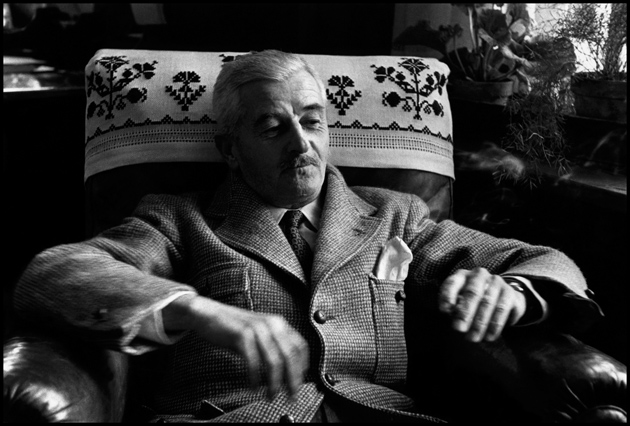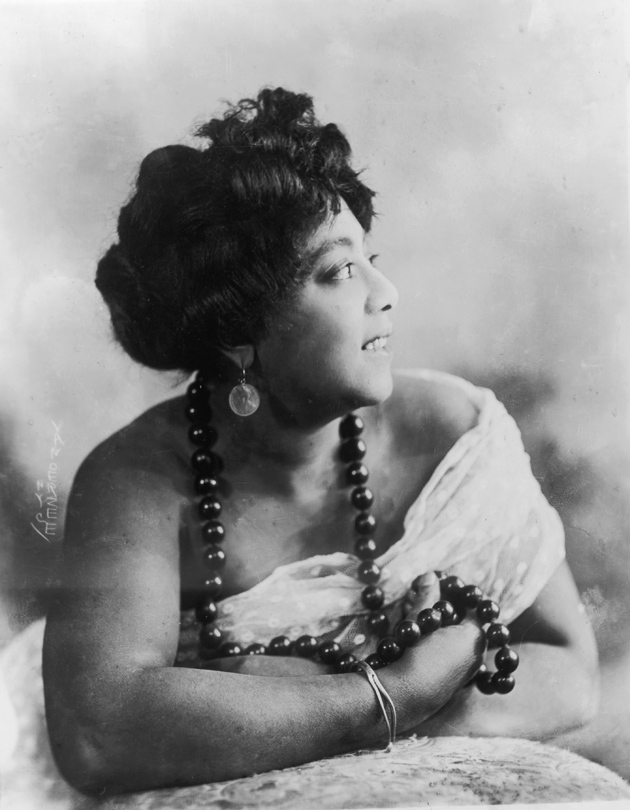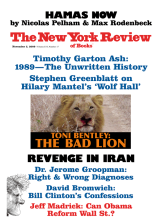1.
So farewell then to Spiller, Thorp, Johnson, and Canby, whose durable Literary History of the United States has led at least two generations of graduate students through the complexities of The Simple Cobbler of Aggawam and other sometimes less than mesmerizing tales. Why goodbye? Because there’s a new posse in town, of scholars and critics more than two hundred strong, led by those savvy sheriffs Greil Marcus and Werner Sollors. This gifted group is here to guide us through our American story, using, when possible, the words of those who lived it, one of the earliest and most influential of whom was the merchant-sailor Amerigo Vespucci, who had been to the West Indies at the beginning of the sixteenth century and was eager to go back and find the vast treasure that Christopher Columbus had so far been unable to locate.
Vespucci dashed off his Mundus Novus, a fund-raising letter that was soon pirated and much debated. Columbus himself had written a fund-raising letter, and for a while, patrons responded; the literary history of America had begun, written at first by Europeans for Europeans, until, eventually, local voices did began to ring out, often with power and eloquence, talking in what William Carlos Williams called “the American grain.”
Though many of the essays here are fairly brief, it is important to note that they are essays, not entries in a pure work of reference, such as Yale University Press’s invaluable New Encylopedia of the American West, edited by Howard R. Lamar,1 which is never far from my hand, and without which, along with Ephraim Katz’s Film Encyclopedia, I would scarcely know how to proceed. The feel of the whole is epic, and this epic ends, fittingly, with the election to the presidency of the frequently eloquent Barack Obama.
Why the authors of the true American epic, Captains Meriwether Lewis and William Clark, who led a great expedition and wrote about it greatly, earn only two mentions, while the admittedly immortal Chuck Berry, who also started out from St. Louis, receives ten is a question for the editors and their readers. (Maybe Harvard just decided to hand off the West to Yale.)
Before I go an inch farther I want to compliment the editors on the bibliographies that accompany each essay. I’m to some extent in the bibliography business and I’ve never seen them done as well as they are here. On the other hand there’s the problem of the physical book. I know it is beneath the dignity of Harvard’s Belknap Press ever to spiral-bind one of its offerings, but this book, cut in two and spiral-bound, would have been a delight to read; in its present format it’s Edmund Wilson’s nightmare. It won’t stay open, and if you open it incautiously it’s apt to flop off the table like an ill-secured fish. Once my job here is over, I intend to have my copy cut into four pieces; I’ll then spiral-bind them and secure myself bedside reading for a long time to come.
2.
By the time I had made my way through about a third of this book I began to feel an emotion that comes but rarely to a reviewer: pride. Not pride in America’s politics or policies necessarily, but pride in our speech. Whether in mansions or shanties, many Americans have spoken well; and, at all social levels, much of the most trenchant speech is summoned in condemnation of our government’s politics or policies.
In my opinion perhaps the single most impressive achievement in the book is the editors’ and writers’ ability to pinpoint linkages between one kind of fact and another. We Americans, the editors insist, are plural, not singular. Here, drawn from the editors’ commentary that focuses on the horrors of Hurricane Katrina, are some examples of what I mean by linkage. First, William Faulkner on the Great Mississippi Flood of 1927:
He did not know what it was because he had never heard it before and he would never be expected to hear such again since it is not given to every man to hear such at all and to none to hear it more than once in his life. And he was not alarmed now either because there was not time, for although the visibility ahead, for all its clarity, did not extend very far, yet in the next instant to the hearing he was also seeing something such as he had never seen before. This was that the sharp line where the phosphorescent water met was now about ten feet higher than it had been an instant before and that it was curled forward upon itself like a sheet of dough being rolled out for a pudding. It reared, stooping; the crest of it swirled like the mane of a galloping horse and, phosphorescent too, fretted and flickered like fire.
That’s from a story called “Old Man,” the title of which refers to the Mississippi. It reminds us that floods and hurricanes have come before, beginning with the big one caused by God’s ill temper, which Noah to some extent thwarted.
Advertisement
The Okeechobee Hurricane followed the Mississippi flood by about a year, and here is Zora Neale Hurston to describe it:
Ten feet higher and far as they could see the muttering wall advanced before the braced-up waters like a road crusher on a cosmic scale. The monstropolous beast had left its bed. Two hundred miles an hour wind had loosed his chains…. The wind came with triple fury and put out the light for the last time. They sat in company with others in other shanties…. They seemed to be staring at the dark, but their eyes were watching God.
In 1974 the singer Randy Newman, whose early childhood was spent in New Orleans, wrote a song called “Louisiana 1927”:
President Coolidge came down in a railroad train
With a little fat man with a notepad in his hand
President say, “Little fat man, isn’t it a shame
What the river has done
To this poor cracker’s land.”
Skip a little and here’s the novelist James Lee Burke’s Tin Roof Blowdown.
When Hurricane Betsy hit New Orleans in ’65, [President] Johnson flew into town and went to a shelter full of people who had been evacuated from Algiers. It was dark inside and people were scared and didn’t know what was going to happen to them. He shined a flashlight in his face and said “My name is Lyndon Baines Johnson. I’m your goddamn president and I’m here to tell you my office and the people of the United States are behind you.” Not bad, huh?
I’ll skip flood-related references from Tom Paine and Herman Melville in order to get in President George W. Bush, who took five days to get to New Orleans. (Calvin Coolidge’s railroad probably beat him.) When Bush did get there he spent the day huddled with local politicos, one of whom was Senator Mary Landrieu, a Democrat. They were taken to the breached 17th Street Canal, where feverish efforts were in progress: cranes, dump trucks, the Army Corps of Engineers, etc.
Senator Landrieu was cheered by all this activity, but, the very next day, when she did a helicopter fly-over of the same site with newsman George Stephanopoulos, she was stunned to see that nothing at all was happening: just a solitary crane, sitting by itself. Senator Landrieu:
I could not believe that the president of the United States had come down to the city of New Orleans and basically put up a stage prop…. They put the props up and the minute we were gone they took them down…. It was an empty spot with one little crane. It was the saddest thing I have ever seen in my life. At that moment I knew what was going on and I’ve been a changed woman ever since.
Back to the editors:
She had seen the country, the United States of America in all its power, seen it plain, read its symbols, saw its history, her history, playing out before her eyes, past and present. She had seen the country, and saw it disappear.
Thus the links: Faulkner, Zora Neale Hurston, Randy Newman, James Lee Burke, Lyndon Johnson, George W. Bush, Tom Paine, Herman Melville, Senator Mary Landrieu, Noah, and, more distantly, God. Like the man at the darkened shelter said: “Not bad, huh?”
3.
In considering how to characterize the contents of this book I was reminded of an anthology issued in the Thirties, the proceedings, sort of, of a writer’s conference held in Los Angeles about that time. It was called American Stuff, which is what, essentially, we have here: lots more American stuff, mainly literary in nature. There are more than two hundred essays, posing, for the reviewer, a problem of selection. My solution, in part, was to scan the contributors list until I found a friend. I found three on the list and chose to go with the variously talented Dave Hickey, last seen by me about fifteen years ago, while I was taking a bath in my ranch house. I heard the front door open and footsteps in the hall. Was it a snakebit cowboy, seeking a phone? Was it a murderous meth head? Nope, it was Dave who glanced at me briefly and said, “Oh, sorry, I just need to borrow this book of Coleridge’s letters,” which he did. My Coleridge book is probably why he was awarded a MacArthur fellowship, and gets standing ovations whenever he cares to lecture.
Advertisement
The piece I want to examine is a short, pure essay called “The Song in Country Music.” It starts with an obligatory account of the death of Hank Williams (January 1, 1953, at age twenty-nine), but Dave is not really interested in the death of Hank Williams: he’s interested in why so many of Williams’s songs still work so well. He asked the veteran Nashville songwriter Harlan Howard to explain it—imagine John Milton explaining to a friend why Andrew Marvell’s “To His Coy Mistress” is still on the charts.
Howard begins by singing for Dave the first verse of Hank Williams’s “Cold Cold Heart”:
I try so hard my dear to say
That you’re my every dream.
Yet you’re afraid each thing I do
Is just some evil scheme
Some mem’ry from your lonesome past
Keeps us so far apart.
Why can’t I free your doubtful mind
And melt your cold, cold heart.
Here’s Hickey:
Howard then pointed out what Roger Miller meant by hooked up. He explained that these eight short lines were invisibly held together by fifteen internal r phonemes. There are triples in the first two lines, four pairs, and the terminal “heart” that gives the verse closure. “Nobody notices this,” Howard said. “That’s the idea, but once these words are put together this way, they won’t come apart.”
When Dave Hickey probes further, Harlan Howard produces an analysis of his own song “Pick Me Up on Your Way Down,” which is more complicated to transcribe than the snatches of Kiowa I quoted in my last piece in these pages.2 Hickey then concludes:
Williams took the brutal simplicity of the country song, which, when Williams picked it up, was little more than a faux-folk trinket designed to last a half a season, and invested it with those elements of pattern that are the mother of memory, with the complex, internal music that we associate with icons of American popular music like Larry Hart, Ira Gershwin, and Cole Porter. Having borrowed his titles and language from vernacular American English, he returned them to the vernacular much burnished, hooked up, and built to last.
One reason American popular music is done so well in this collection—at least a dozen pieces concern themselves with it—is because editor Greil Marcus has long been interested in it.
Perhaps the most interesting of these music entries is Daphne A. Brooks’s wonderful piece on early blues recordings. The first black woman to make a phonograph record was Mamie Smith, not to be confused with Bessie Smith, Ma Rainey, or anyone else; the record is Crazy Blues (1920), about which there was, and is, a ferocious debate. Mamie Smith came from vaudeville, rather than, say, the cane fields. All that can safely be said, without knowing the complex racial and theatrical contours of the argument, is that Mamie Smith’s record was first. Whether she was blue enough is an open question. And it seems that Sophie Tucker, neither black nor blue but a surefire entertainer, almost got the gig.
After Daphne Brooks, whose essay can be read together with Luc Sante’s on the invention of the blues, my vote for the most charming piece about music is James Miller on Chuck Berry and “Roll Over Beethoven.” In his Autobiography Berry explains that he wasn’t mad at Beethoven but at his sister Lucy, who, by monopolizing the family piano, delayed the arrival of rock and roll for twenty years, the sort of jest you won’t find in every rocker’s memoir.
4.
A common difficulty in efforts such as this one is what to do about the icons—something that won’t seem boring. Must Thomas Jefferson always be brilliant? Must Miles Davis always be cool?
Mostly the editors have eschewed abject piety, while not actually ignoring the big speeches that demand attention, in this case Washington’s Farewell Address, Jefferson’s First Inaugural, and Lincoln’s more famous Second; these speeches and speakers have been treated with crisp critiques by, respectively, François Furstenberg, Jan Ellen Lewis, and Ted Widmer. Widmer points out how clearly Lincoln understood the power of the syllable: in the Second Inaugural, he tells us, 505 out of 703 words are of one syllable.
When the weary reader begins to stoop under the weight of dutifulness he or she can easily sniff out lighter fare: Catherine Keyser’s “Girls Who Wear Glasses,” for example, in which we learn that Dorothy Parker’s most famous poem—“Men seldom make passes/At girls who wear glasses”—actually had a title: “News Item.” Besides Parker there’s Anita Loos and Edna St. Vincent Millay, the former of whom I met, still going strong lots of decades after she wrote scenarios for D.W. Griffith. She and her husband John Emerson even published a book called How to Write Photoplays in 1919! I also greatly enjoyed Joan Shelley Rubin on the Book-of- the-Month Club, a secretive-seeming entity which is now publishing excellent—too excellent for the rare bookseller’s comfort—facsimiles of earlier selections.
On the whole, entertainment and entertainers are more thoroughly covered than anything except literature—all the major writers, whether in poetry or prose, draw thoughtful essays. Helen Vendler is great on Wallace Stevens, as one would expect; but my favorite piece among the literary essays is Keith Taylor’s beautiful Old Criticism essay on Ernest Hemingway’s prose, which serves to remind us yet again how very good Hemingway was when he was good. Not long before he died the English novelist Anthony Powell mentioned in his journal that he could cheerfully read The Sun Also Rises every six months, and so can I: mostly for the prose.
Among the various essays on the movies, one that immediately attracted me was Joseph McBride’s “The Screenplay as Genre.” This turned out to be mostly a rehash of the huge fracas Pauline Kael caused in 1971, in The New Yorker, by claiming that Orson Welles neither wrote nor dictated a single line of the script of Citizen Kane, a claim that, of course, was hotly debated.
Of more interest to me was a couple of remarks the director Howard Hawks made in an interview with McBride. First, when asked why his movies from the Fifties held up so well, Hawks said, “Most of them were well written. That’s why they last.” But only a moment later, he confounds the interviewer by saying, “If it reads good, it won’t play good.” Though seemingly contradictory, what Hawks may have meant is that snappy dialogue is no substitute for a solid narrative structure, a point few directors would disagree with. As for Welles, Kael, and Herman Mankiewicz (the screenwriter Kael was championing), auteurism has pretty much come and gone but tussles over credit will always be with us.
In general the editors were probably wise to just let the calendar roll, avoiding stodgy options such as subject headings. They mention early that they don’t feel obliged to cover every “state or era.” I’m happy enough not to hear them on North Dakota, although that unusual state has produced William H. Gass’s great story “The Pedersen Kid.” It can probably even lay some claim to Louise Erdrich. But the era of western settlement, extending as it did from the return of Lewis and Clark in 1809 to (in Frederick Jackson Turner’s opinion) 1893, the year my grandparents built their first frame house in Texas, is a more complicated national puzzle and one won’t learn much about it from this book. As I suggested earlier, Yale has a pretty big lead in dealing with western matters.
When I took the trouble to consult the excellent index to see how some of the colorful western characters I’ve written about for this journal fare in the New Literary History, I came up with a fairly low score. General Custer is mentioned once, Geronimo is mentioned once, I am mentioned once, Frank Lloyd Wright is mentioned once—probably about half the index consists of people who are mentioned once. Custer and Geronimo had an impact on our history that is not entirely exhausted yet; why wouldn’t they rate more space than, say, Stan Laurel?
This Issue
November 5, 2009
-
1
See my review in these pages, October 22, 1998.
↩ -
2
”Indian Terror on Our New Frontier,” July 2, 2009.
↩





